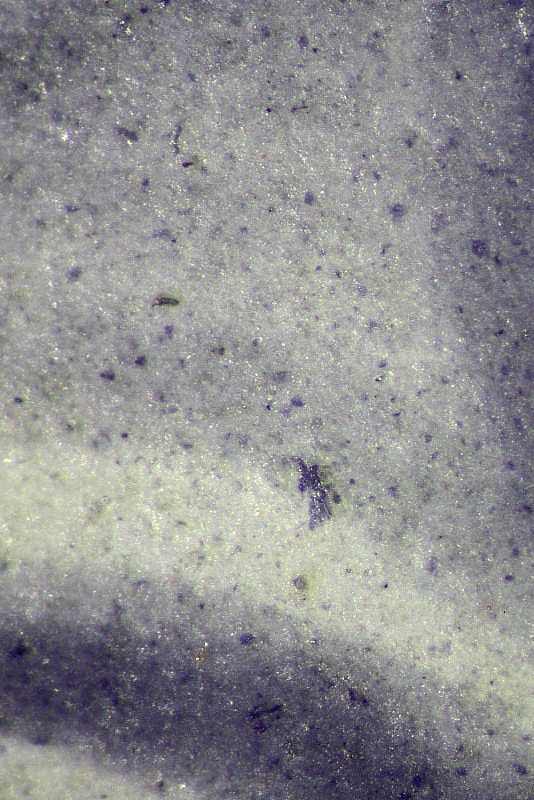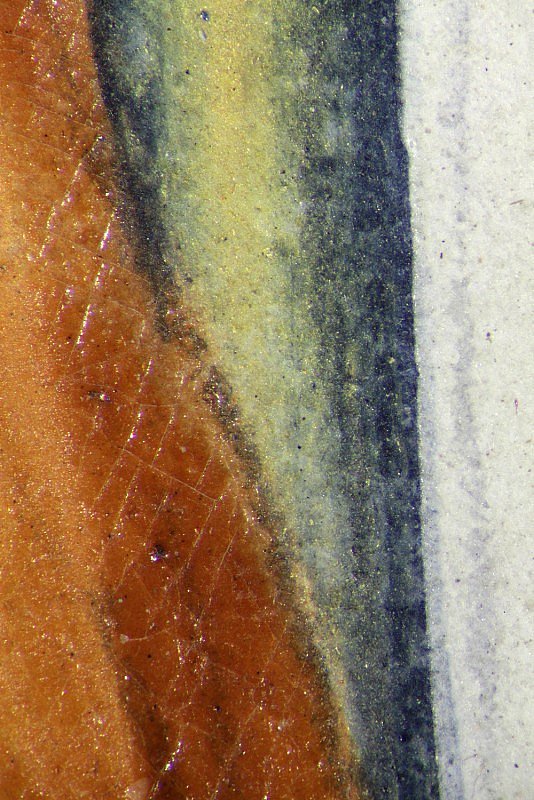Later interventions
Artists' Materials
The unfinished illustrations in quire 15 (fols. 98-102), sketched but not coloured by the original artist, were completed by an amateur hand at a later date. The same hand probably touched up the right border of fol. 1r and may have overpainted the coats of arms on the same page. These interventions were carried out using vermilion red, ultramarine blue, a green mixture of indigo and orpiment called vergaut, an insect-derived pink dye and lead white. Throughout quire 15, the gold leaf is laid over a red ground, in which gypsum is mixed with a red earth, instead of the blue ground used in the earlier part of the manuscript. All of these materials are compatible with a medieval artist’s palette; the absence of ‘modern’ pigments, synthesised in the 19th century, suggests that this intervention might have taken place around the time the manuscript left the Albi ecclesiastical library and was sold to Count Justin MacCarthy Reagh c. 1800.
The miniature as well as the decorated initial on fol. 103r, partially completed by the original artist, also show evidence of later additions in the black outlines of the figures and robes, and in the blue-green and yellow lining of the kneeling bishop’s robe, which has no parallel elsewhere in the manuscript.


Bishop-elect kneels before the Archbishop (Office for Consecrating a Bishop)
The Master of the Cambridge Pontifical of Renaud de Bar designed this page, but did not finish painting the decoration. He did, however, apply some paint to the robes, including a delicate lilac colour (hotspot 1). This is the first instance where this colour appears in the manuscript. The miniature was partially completed by a later artist who outlined the figures and added some of the colours, probably including the blue-green and yellow lining of the kneeling bishop’s robe (hotspot 2). A standing bishop is depicted in the historiated initial I, a lion races up the bar border, and men play a game resembling bowls in the bas-de-page scene.